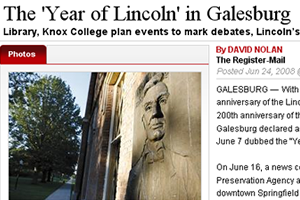 Author Fergus Bordewich’s “Bound for Canaan” traces the abolition movement from 1790 to the eve of the Civil War, primarily through the Underground Railroad. Bordewich writes that the Underground Railroad “…occupies a romantic place in the American imagination that is shared by only a few episodes in the nation’s history: the Lewis and Clark expedition, for instance, the California Gold Rush, the Indian wars, and a handful of others.” (Bound for Canaan, 3) And perhaps because of its position in the American consciousness, the memory of the Underground Railroad, like so many other prominent historical events, is checkered with truths and untruths. Was the Underground Railroad a consistently clandestine operation? Are clever codes and hiding places all there is to amaze the modern student of the Underground Railroad? Indeed, secrecy, codes, and hiding places all had their part in the Underground Railroad, but a concentration on these has served to give birth to myths clouding the truth of the movement.
Author Fergus Bordewich’s “Bound for Canaan” traces the abolition movement from 1790 to the eve of the Civil War, primarily through the Underground Railroad. Bordewich writes that the Underground Railroad “…occupies a romantic place in the American imagination that is shared by only a few episodes in the nation’s history: the Lewis and Clark expedition, for instance, the California Gold Rush, the Indian wars, and a handful of others.” (Bound for Canaan, 3) And perhaps because of its position in the American consciousness, the memory of the Underground Railroad, like so many other prominent historical events, is checkered with truths and untruths. Was the Underground Railroad a consistently clandestine operation? Are clever codes and hiding places all there is to amaze the modern student of the Underground Railroad? Indeed, secrecy, codes, and hiding places all had their part in the Underground Railroad, but a concentration on these has served to give birth to myths clouding the truth of the movement.
Bordewich addresses the issues of myth and reality in the Underground Railroad in “Bound for Canaan,” but for a more succinct discussion of the issue, one can turn to the author’s blog. A post from July of 2005 examines the truth of the Underground Railroad in accessible, informative prose, and serves as a fine introduction and springboard for further investigation of the issue. Certainly worth reading.
The Underground Railroad: Myth & Reality
 Today the Abraham Lincoln National Heritage Area printed an article in the Morris Daily Herald located in Illinois congratulating President-elect Barack Obama. Within the article they metion how Obama’s victory helps to keep the legacy of Lincoln alive.
Today the Abraham Lincoln National Heritage Area printed an article in the Morris Daily Herald located in Illinois congratulating President-elect Barack Obama. Within the article they metion how Obama’s victory helps to keep the legacy of Lincoln alive.












